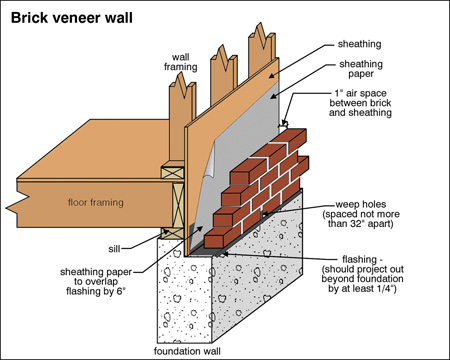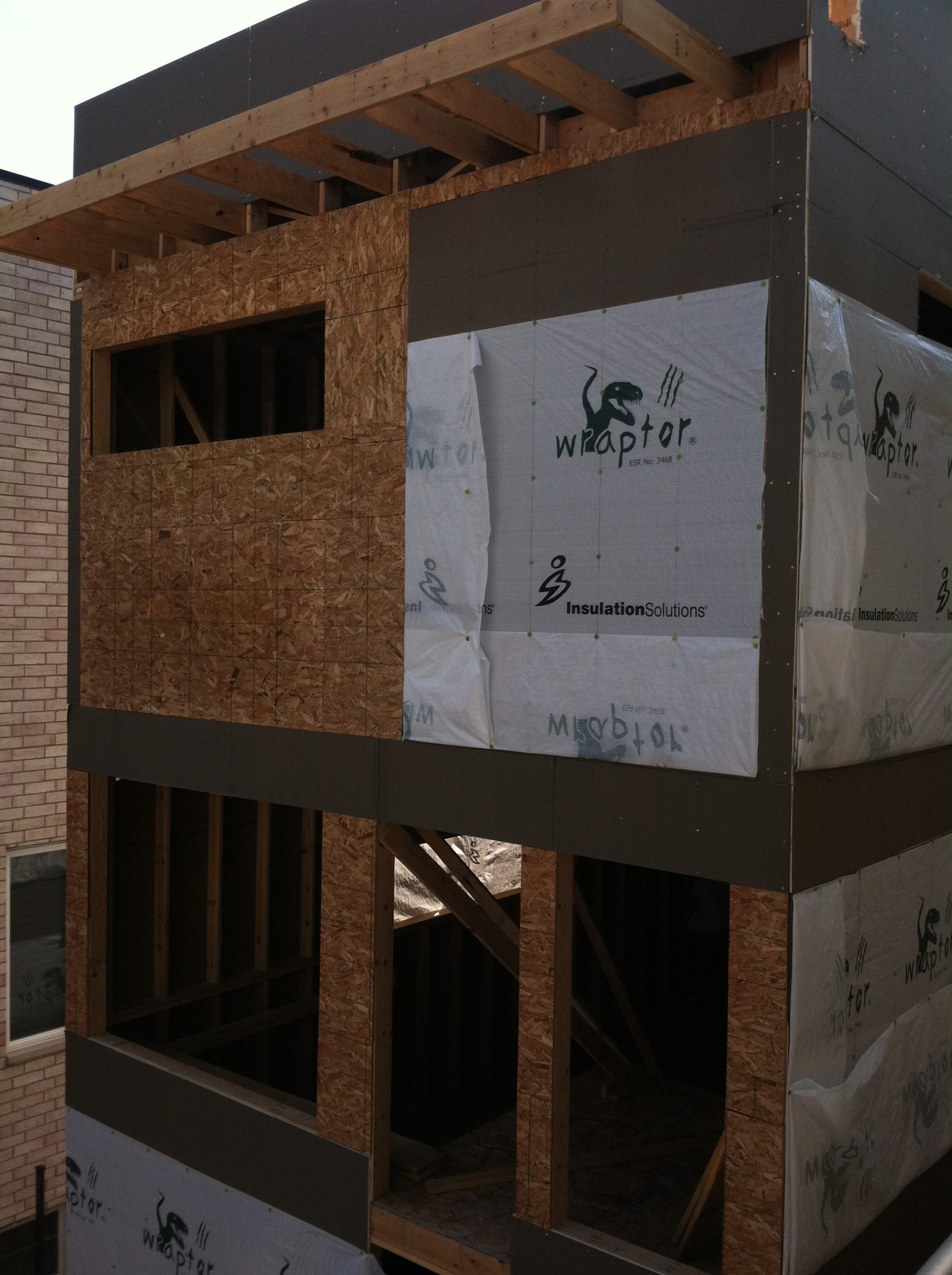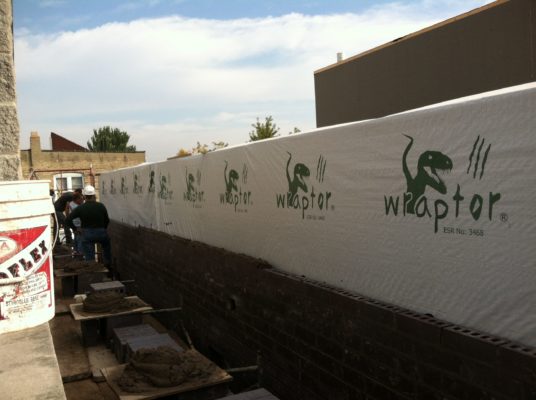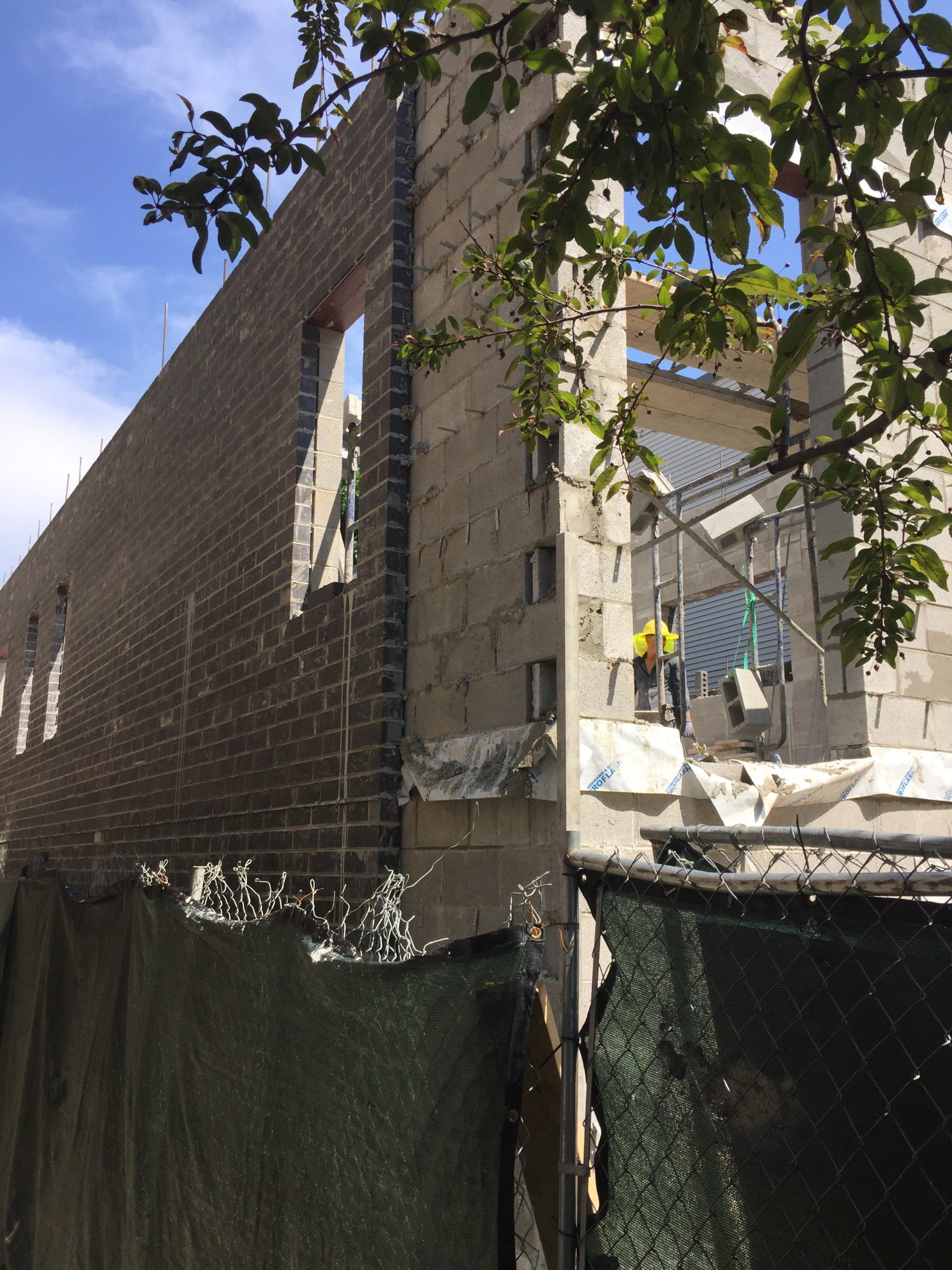The vast majority of Chicago homebuyers don’t know that there are really two different types of brick homes. They see brick and…well…they think the home is made out of brick. It’s a little more complicated than that actually. There is brick veneer and then there’s solid masonry and you can’t typically tell the difference between the two very easily.
Brick Veneer Construction
A lot of the brick homes you see at $1.5 MM and less are actually a frame construction with brick veneer and that’s because they are less expensive to build than solid masonry. The term veneer kinda sounds like it’s a fake brick covering but it’s not. It’s regular, real brick but it’s laid around a wooden frame structure. So the core of the house is the same as you would find in a home with siding but the outer layer is brick. In between the frame and the brick is a layer of sheathing, which is often gypsum (a drywall-like material) or maybe even plywood, usually wrapped in Tyvek or something similar.

Here are a couple of photos I took of a brick veneer house in my neighborhood that was under construction. Notice how they used plywood for sheathing in some places and gypsum in others. I have no idea how they decide between the two.
Brick is laid as a final layer around the perimeter of the house which serves as the main weather barrier.
Solid Masonry Construction
In contrast, the basic structure of a solid masonry house is made from an interior layer of brick – the floor joists sit on this interior layer instead of wood framing. Here is a photo I took of such a house under construction in Lake View.
Note that instead of internal wooden framing the structure of the house is built using thin cinder blocks or CMUs (concrete masonry units). Then another layer of more expensive and attractive brick is applied to the outside of the house. If you look closely at the photo you’ll see that there are protruding, corrugated metal strips set into the cinder block mortar joints that then get sandwiched into the brick veneer mortar joints. This provides additional support to the outer wall and keeps it from separating from the inner wall.
In this particular photo you’ll see that there is a very small gap between the two layers of brick. This is not a great construction technique because that gap is supposed to allow any water that penetrates the outer layer to harmlessly run down the outside of the gap. This close spacing could allow water to penetrate the inner layer of brick.
There are actually a couple of variations of solid masonry construction. When brick homes were built in Chicago 100 years ago they actually used 3 layers of the smaller brick – I assume cinder block hadn’t been invented yet. There are plenty of these 100+ year old brick buildings still around the city and if you have to open up their walls to do some work you often encounter these three layers.
Then, right after the turn of the century, during the housing boom, it became very popular to use a single layer of wide (8 inches) cinder blocks on the sides and backs of buildings to reduce the construction costs. To make these buildings look nicer they often used split face blocks. The only problem is that split face block is extremely porous and needs to be sealed. And because it often wasn’t sealed that usually resulted in some severe water infiltration issues.
Comparing Brick Veneer To Solid Masonry Construction
Everyone knows the story of the Three Little Pigs. The house that best withstood the trials of the Big Bad Wolf was clearly the brick one. The only thing is that we’re not sure whether that was a solid masonry house or a brick veneer house. Dr. Klaus Faust of Harvard’s Department of Comparative Literature has spent his life and a generous federal grant studying this fairy tale. Unfortunately, even after going back to the original clay manuscripts and illustrations he is unable to provide additional insight into this pressing issue. Nevertheless, it’s clear that brick is better than straw or twigs and you can assume that two layers of brick are better than one layer of brick.
In principle you should expect solid masonry construction to be more wind and fire resistant and it isn’t susceptible to rotting or termites. So it’s clearly better and higher end homes are built this way. However, don’t expect a solid masonry house to save you money on your property insurance. While a brick veneer house could come down quickly in a fire a fire that burns long enough will also eventually destroy a solid masonry structure. And a solid masonry house is more expensive to rebuild. When it comes to home ownership you just can’t win.
#HomeConstruction
Gary Lucido is the President of Lucid Realty, the Chicago area’s full service real estate brokerage that offers home buyer rebates and discount commissions. If you want to keep up to date on the Chicago real estate market or get an insider’s view of the seamy underbelly of the real estate industry you can Subscribe to Getting Real by Email using the form below. Please be sure to verify your email address when you receive the verification notice.


